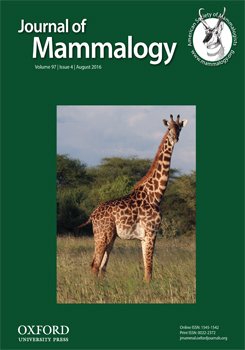Although many tropical countries have functional wind farms, most of the information on their impact on bat populations has come from temperate zones. Our study is based on a 5-year study (2009–2013) of bat captures using mist nets, acoustic recordings, and carcass searches at a wind farm in tropical southern Mexico. We investigated the composition of bat species, estimated the number of bat fatalities per turbine, and assessed the effect of the spatial attributes of vegetation cover near turbines on numbers of bat carcasses recovered by trophic guild. We recorded 29 bat species at the wind farm. The family Phyllostomidae was best represented in terms of number of species and individuals captured. Glossophaga soricina and G. morenoi exhibited the highest relative abundance, whereas Balantiopteryx plicata had the highest acoustic activity. We found 203 carcasses, including 73 Pteronotus davyi individuals (35.9%); other frequent species were Mormoops megalophylla, Molossus sinaloae, and Lasiurus intermedius. The total number of carcasses found within a year ranged from 17 to 83 (2012 and 2009, respectively), with the corrected estimates ranging from 410 to 1,980, or 4.18–20.20 fatalities/turbine. The number of carcasses recorded was positively correlated with secondary vegetation surrounding turbines but negatively correlated with agricultural fields. The spatial attributes of vegetation surrounding turbines influenced numbers of bat carcasses differentially depending on the bats' trophic guild and habitat use. Contrary to findings from United States and Canadian wind farms, most of the carcasses observed in our study were resident species. Notably, the most commonly captured and acoustically active species were not the most commonly found in carcass searches. To obtain more accurate information about the most vulnerable species and how to reduce the impact on bat mortality, we advise the use of alternative monitoring methods in pre-construction studies.
How to translate text using browser tools
22 April 2016
Bats in a tropical wind farm: species composition and importance of the spatial attributes of vegetation cover on bat fatalities
Beatriz Bolívar-Cimé,
Addy Bolívar-Cimé,
Sergio A. Cabrera-Cruz,
Óscar Muñoz-Jiménez,
Rafael Villegas-Patraca
ACCESS THE FULL ARTICLE

Journal of Mammalogy
Vol. 97 • No. 4
August 2016
Vol. 97 • No. 4
August 2016




